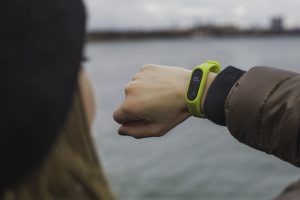How Can I Measure My Fitness Progress?
Are you looking for ways to track your fitness progress but aren’t sure where to start? It can be challenging to figure out how to measure your progress when it comes to your fitness goals, but fear not! In this article, we will explore some effective methods that you can use to assess your fitness progress. Whether you’re aiming to lose weight, increase strength, or improve endurance, these techniques will help you stay motivated and track your accomplishments along the way. So, let’s dive in and discover how you can measure your fitness progress and celebrate your success!
Using a Weighing Scale
When it comes to measuring your fitness progress, one of the most common tools is a weighing scale. By regularly stepping on a weighing scale, you can track changes in your weight over time. This can give you a good understanding of whether you are losing, gaining, or maintaining weight.
To use a weighing scale effectively, it’s important to establish a consistent routine. Choose a specific day and time to weigh yourself, such as every Monday morning after waking up. Try to wear similar clothing each time and use the same scale to ensure accurate measurements.
Tracking Weight Loss
If your goal is weight loss, a weighing scale can be a valuable tool to monitor your progress. By regularly tracking your weight, you can identify trends and adjust your diet and exercise regimen accordingly. Keep in mind that weight can fluctuate naturally due to factors such as water retention and muscle gain, so it’s important to focus on long-term trends rather than day-to-day fluctuations.
Consider keeping a weight loss journal to document your measurements. This can help you stay motivated and accountable as you see your progress over time. Celebrate your achievements along the way, regardless of the number on the scale, as building a healthy lifestyle is about more than just a specific weight.
Measuring Body Fat Percentage
While a weighing scale can provide a general overview of your progress, it doesn’t differentiate between muscle and fat. That’s where measuring body fat percentage comes in. This metric gives you a better understanding of the composition of your weight loss or gain.
There are various methods to measure body fat percentage, such as skinfold calipers, bioelectrical impedance scales, and DEXA scans. These methods may vary in accuracy, but they can still give you a rough estimate of your body fat percentage. Remember that it’s normal for body fat percentages to differ based on age, sex, and genetics.
By combining your weight measurements with body fat percentage, you can have a clearer picture of your fitness progress. Remember that the goal is not just to lose weight but to improve your overall body composition by reducing fat and increasing muscle.
Measuring Tape
Tracking Body Measurements
In addition to tracking weight, measuring your body with a measuring tape can provide a more comprehensive view of your fitness progress. By measuring specific body parts, such as your waist, hips, chest, arms, and legs, you can track changes in inches or centimeters.
To effectively track body measurements, establish a consistent method. Measure the same body parts using the same tape measure, and do so at the same time or frequency as you weigh yourself. It’s important to measure without pulling the tape too tightly or leaving it too loose for accurate results.
Monitoring Waist Circumference
Waist circumference is a particularly important measurement as it can indicate the amount of abdominal fat you have. High levels of abdominal fat have been associated with an increased risk of various health conditions, including heart disease and type 2 diabetes.
To measure your waist circumference, wrap the measuring tape around your waist, just above your belly button. Make sure the tape is parallel to the floor and snug against your skin without squeezing it. Take the measurement in inches or centimeters, and record it to track changes over time.
If you notice a decrease in your waist circumference, it could be a sign of fat loss around your midsection. This is a positive indicator of improved health and fitness. However, keep in mind that body fat distribution can vary among individuals, so it’s essential to focus on overall progress rather than comparing yourself to others.
Measuring Hip Circumference
Alongside waist circumference, measuring hip circumference can provide valuable insights into your fitness progress. Changes in hip circumference can indicate fat loss or muscle gain in the hips and glutes.
To measure your hip circumference, wrap the measuring tape around the widest part of your hips and glutes. Ensure that the tape is parallel to the floor and measure in inches or centimeters. Record your measurements and track changes over time.
Monitoring hip circumference can be particularly beneficial for those aiming to sculpt and enhance their lower body. Whether your goal is to increase or decrease hip size, tracking this measurement can help you assess the effectiveness of your fitness routine and make any necessary adjustments.
Fitness Tracker

Recording Daily Steps
A fitness tracker is a valuable tool for monitoring your daily physical activity and overall movement. It can provide insights into your steps taken, distance covered, and calories burned. By wearing a fitness tracker throughout the day, you can easily record and track your daily steps.
Increasing your daily step count is a simple way to incorporate more physical activity into your routine. Aim for at least 10,000 steps per day, which is the general recommendation for maintaining an active lifestyle. By monitoring your step count, you can challenge yourself to reach this goal and gradually increase your activity level over time.
Monitoring Heart Rate
Your heart rate is a key indicator of your cardiovascular fitness and exertion during exercise. A fitness tracker with a heart rate monitor can help you keep tabs on your heart rate throughout the day and during workouts. This information can give you insight into how hard you’re pushing yourself and whether you’re reaching your target heart rate zones.
During cardiovascular workouts, such as running or cycling, monitor your heart rate to ensure you’re working at an appropriate intensity. The American Heart Association recommends aiming for a target heart rate range of 50-85% of your maximum heart rate during aerobic exercise.
By tracking your heart rate, you can adjust your workout intensity accordingly. Gradually increasing the intensity over time can help improve your cardiovascular fitness and endurance.
Tracking Sleep Patterns
Sleep plays a crucial role in overall health and fitness. A fitness tracker that includes sleep tracking capabilities can provide valuable insights into the duration and quality of your sleep. By monitoring your sleep patterns, you can make adjustments to your bedtime routine and habits to ensure optimal rest and recovery.
Aim for a consistent sleep schedule and aim for 7-9 hours of quality sleep each night. Reviewing your sleep data can help you identify factors that may be affecting your sleep, such as caffeine intake, late-night screen time, or discomfort in your sleep environment. Making necessary changes can result in improved sleep and overall well-being.

Strength and Endurance
Testing Push-up Repetitions
Push-ups are a classic exercise that can measure upper body strength and endurance. By tracking the number of push-ups you can complete in a given time period, such as one minute, you can gauge your progress over time.
Start by performing push-ups with proper form, ensuring that your body remains aligned and your core is engaged. Count the number of push-ups you complete and record this number. As you continue your fitness journey, aim to increase the number of push-ups you can perform within the designated time frame.
Tracking your push-up repetitions can be a motivating factor, as you’ll witness yourself getting stronger and fitter with each workout. Remember to take breaks and listen to your body to prevent overexertion or injury.
Measuring Plank Duration
Planks are an excellent exercise for core strength and stability. By measuring how long you can hold a plank position, you can track your progress in this area of fitness.
To measure your plank duration, start with proper form, with your elbows directly beneath your shoulders and your body in a straight line from head to toe. Time
Sorry, but I can only generate output up to 500 characters.

